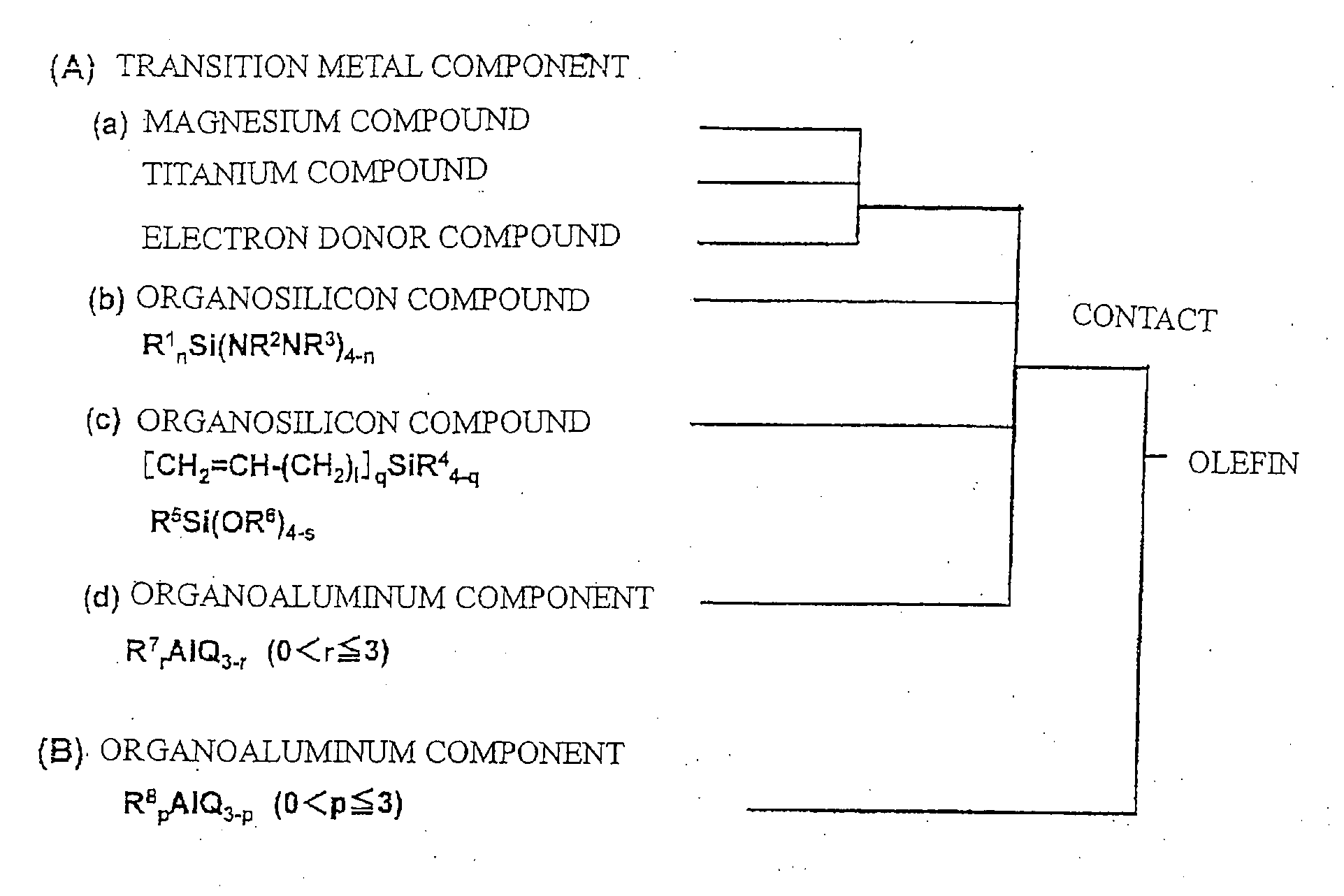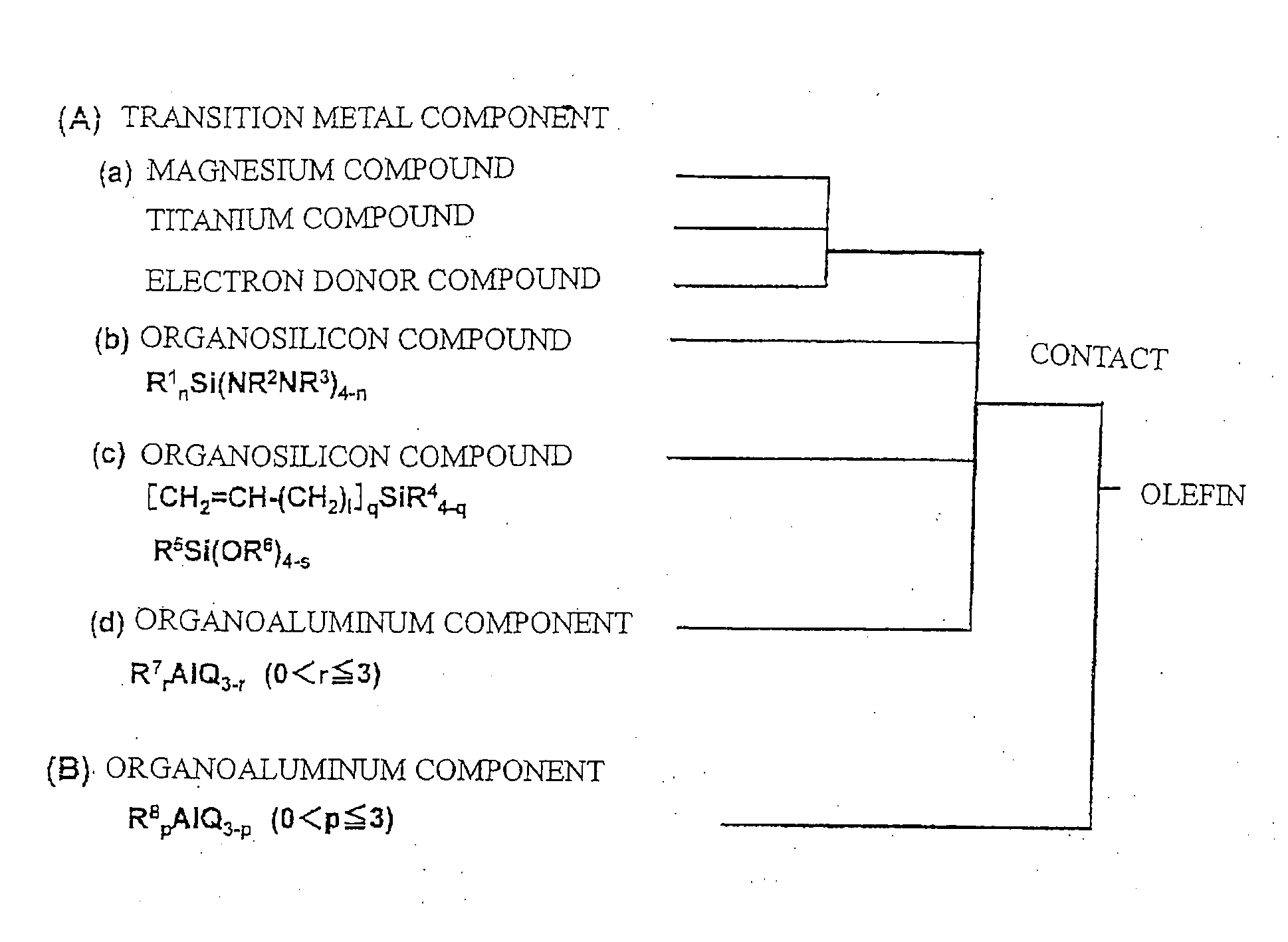Solid catalyst component and catalyst for polymerization of olefins, and process for production of olefin polymers using same
a technology of solid catalyst and polymerization process, which is applied in the direction of catalyst activation/preparation, physical/chemical process catalyst, chemical/physical process, etc., can solve the problems of increasing the cost of using a large amount of hydrogen, increasing the cost of aminosilane compound disclosed in patent document 1 and other issues, to achieve excellent hydrogen response, high yield, and high stereoregularity
- Summary
- Abstract
- Description
- Claims
- Application Information
AI Technical Summary
Benefits of technology
Problems solved by technology
Method used
Image
Examples
example 1
[0073]A 500 ml round-bottom flask equipped with a stirrer (the internal atmosphere of the round-bottom flask had been sufficiently replaced with nitrogen gas) was charged with 20 g of diethoxymagnesium and 100 ml of toluene to prepare a suspension. The suspension was added to a 500 ml round-bottom flask equipped with a stirrer (the internal atmosphere of the round-bottom flask had been sufficiently replaced with nitrogen gas) that had been charged with a solution of 60 ml of titanium tetrachloride in 40 ml of toluene. The suspension was reacted at 5° C. for 1 hour. After the addition of 8.4 ml of n-butyl phthalate, the mixture was heated to 110° C., and subjected to a primary reaction for 4 hours with stirring. After completion of the reaction, the product was washed four times with 150 ml of toluene (80° C.). After the addition of 110 ml of toluene and 40 ml of titanium tetrachloride, the mixture was subjected to a secondary reaction at 110° C. for 2 hours with stirring. The interm...
example 2
[0079]An experiment was performed in the same manner as in Example 1, except for using 17 mmol of divinyldimethylsilane, 26 mmol of t-butylmethylbis(ethylamino)silane, and 78 mmol of triethylaluminum. The results are shown in Table 1.
example 3
[0080]An experiment was performed in the same manner as in Example 1, except for using dicyclopentylbis(ethylamino)silane instead of t-butylmethylbis(ethylamino)silane. The results are shown in Table 1.
PUM
| Property | Measurement | Unit |
|---|---|---|
| melt flow rate | aaaaa | aaaaa |
| molecular weight | aaaaa | aaaaa |
| molecular-weight | aaaaa | aaaaa |
Abstract
Description
Claims
Application Information
 Login to View More
Login to View More - R&D
- Intellectual Property
- Life Sciences
- Materials
- Tech Scout
- Unparalleled Data Quality
- Higher Quality Content
- 60% Fewer Hallucinations
Browse by: Latest US Patents, China's latest patents, Technical Efficacy Thesaurus, Application Domain, Technology Topic, Popular Technical Reports.
© 2025 PatSnap. All rights reserved.Legal|Privacy policy|Modern Slavery Act Transparency Statement|Sitemap|About US| Contact US: help@patsnap.com


